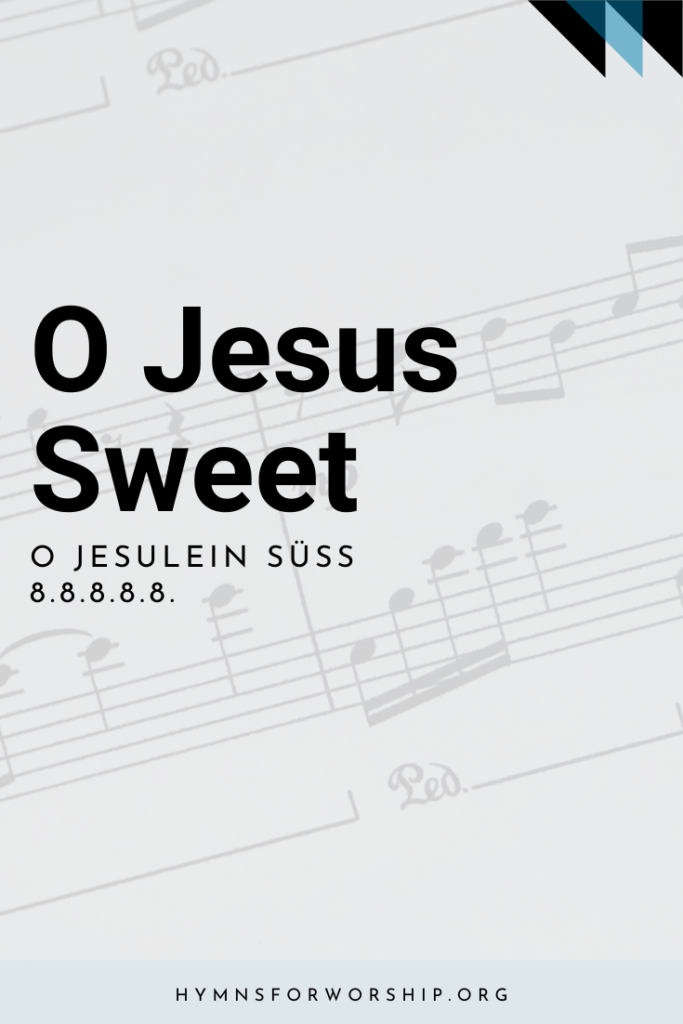JESUS CHRIST >> Birth
SDAH 134
O Jesus sweet, O Jesus mild,
Thy Father’s will hast Thou fulfilled;
For Thou hast left Thy heavenly throne
Our lowly state to make Thine own.


Get the hymn sheet in other keys here
For Worship Leaders
Make each hymn more meaningful with these helpful tools: Short, ready-to-use hymn introductions for church bulletins, multiple ways to introduce a hymn based on your worship theme and in-depth history and insights to enrich your song service.
Hymn Spotlight: O Jesus Sweet
This gentle Christmas hymn, with roots in 17th-century Germany, invites us to quietly adore our Savior. The original text by Valentin Thilo reflects on the tenderness and humility of Jesus’ birth, while the melody, O Jesulein Süss, was later harmonized by J.S. Bach.
In this reverent carol, translated and arranged by E. Harold Geer, we’re reminded that the King of heaven came not in grandeur, but in love and simplicity—to redeem us and dwell in our hearts.


Text
1
O Jesus sweet, O Jesus mild,
Thy Father’s will hast Thou fulfilled;
For Thou hast left Thy heavenly throne
Our lowly state to make Thine own.
O Jesus sweet, O Jesus mild.
2
O Jesus sweet, O Jesus mild,
With joy hast Thou the whole world filled;
Thou comest down from heaven’s hall
To comfort us whom tears enthrall.
O Jesus sweet, O Jesus mild.
3
O Jesus sweet, O Jesus mild,
Thou art love’s image undefiled.
Inflame our hearts with love’s pure fire,
That we may share Thy heart’s desire.
O Jesus sweet, O Jesus mild.
4
O Jesus sweet, O Jesus mild,
Help us to do as Thou hast willed.
What’er we have belongs to Thee:
O may we ever faithful be.
O Jesus sweet, O Jesus mild.

Hymn Info
Biblical Reference
(a) John 6:38; Phil 2:7
Author
Valentin Thilo, 1650
Translator
E. Harold Geer (1886-1957)
Year Published
1933
Copyright
Copyright 1933 by Carl Fischer, Inc., New York. Copyright renewed 1960. Reprinted by permission.
Hymn Tune
O JESULEIN SUSS
Metrical Number
8.8.8.8.8.
Arranged; Harmonized
Harm. by J.S. Bach (1685-1750); Arr. by E. Harold Geer, 1953
Tune Source
Auserlene Kirchengesange
Theme
BIRTH OF JESUS CHRIST





